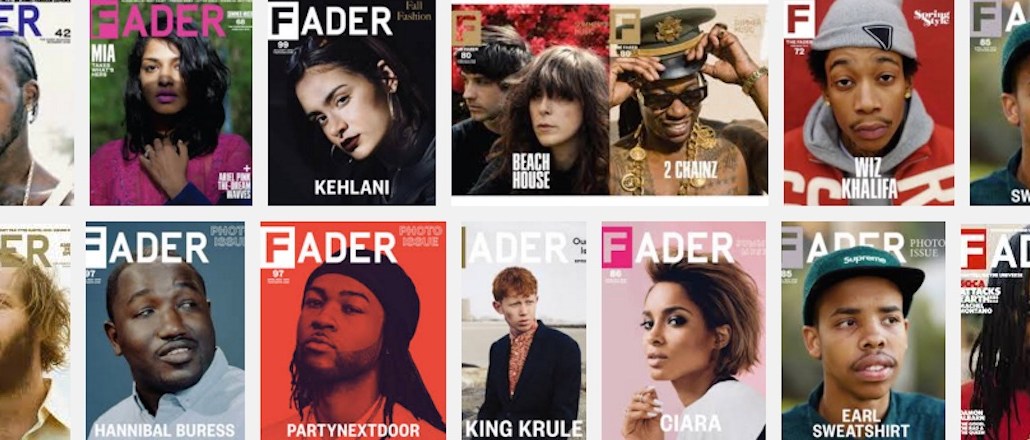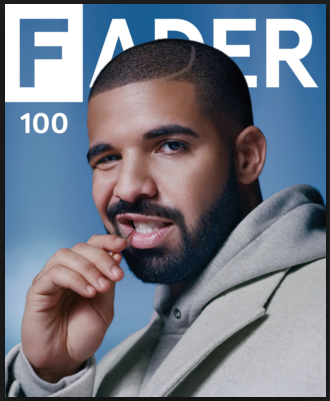Register by Jan 13 to save on passes and connect with marketers from Uber, Bose and more


Music and culture magazine The Fader is best known by its fans for bringing to light emerging artists — from Kanye West to The White Stripes to Nicki Minaj — before they’ve broken big. But this week it is Fader itself that has taken centerstage.
The 16-year-old print magazine celebrated its 100th issue by releasing its entire archives for free through BitTorrent — all 99 previous issues. The current 256-page issue, with Drake and Rihanna on alternate covers, is also available for free download on the site. The move its turning out to be as successful as it is unconventional: In one week, Fader has seen nearly 1 million downloads of the 100th issue (that number was at 975,000 as of Thursday morning, according to a Fader spokesperson) and nearly 40,000 people have downloaded the entire Fader 100 BitTorrent Bundle.
“The numbers have been staggering,” said Jon Cohen, who co-founded the magazine with Rob Stone in 1999. “We’re 100 issues in and we’ve seen the biggest growth we’ve ever had in our history. That’s really encouraging in a music space where a lot of others have lost their way.”
When Fader printed its first issue, Spin and Vibe were still viable music publications. Pitchfork, which was acquired by Condé Nast last week, was in its infancy, and MTV was still able to influence the market. Today, Spin and Vibe no longer exist. While Fader’s paid circulation is not audited, the magazine reports it has about 40,000 print and 12,500 digital subscriptions. TheFader.com saw 1.2 million unique visitors in September, according to comScore — dwarfed by Pitchfork’s 2.8 million and Rolling Stone’s 11 million September uniques.
“It’s a very nice music magazine; I look at every issue,” said Samir Husni, founder and director of the Magazine Innovation Center at the Meek School of Journalism and New Media. “Fader has been true to its core since its beginning. Spin and Vibe were frozen in time, exactly like Playboy.”
Husni said the Fader has remained viable, like Rolling Stone, by understanding its readership and not trying to expand too quickly. Which is not to say it’s stagnant. Fader magazine and TheFader.com both underwent a significant redesign this year, complete with a new streamlined logo. Since the redesign, traffic is up 316 percent online and 449 percent on mobile, according to Cohen.
The publisher has made an investment in video, grown its events business and dabbled in e-commerce. The magazine re-hired Naomi Zeichner as editor-in-chief, who left the magazine seven months prior to join BuzzFeed. She returns with both an understanding of the Fader sensibility and the BuzzFeed nose for scalability. So the BitTorrent Bundle is a gift to the readers that have stuck it out with Fader — and an enticement to stick around.
Husni, however, has his doubts. “Offering your entire archives for free is a nice gimmick, but how are they going to make money out of it,” asked Husni. “Esquire did it with Esquire Classic: You have to pay for it.”
If there was any concern over giving the store away for free through the BitTorrent Bundle, though, Cohen wasn’t letting on. “If we can hit readers where they want to consume, we can find a way to monetize,” he said. “Let’s put it on as many platforms as makes sense for our readers.”
Indeed, the Fader bundle is the second-most downloaded text project in BitTorrent’s history, with a 25 percent conversion rate. Since January 1, The Fader has been mentioned more than 239,000 times on Twitter, peaking in February when several stories revolving around Kanye West received a lot of attention, according to Brandwatch analyst Kellan Terry. September and October have seen tweets with the most positive sentiment, most likely an outpouring of support around Fader’s 100th issue.
“We will do anything that enhances our reader experience,” said Cohen. “We’re not trying to become the Walmart of music.”
Images courtesy of The Fader.
More in Media

Why publishers are building their own creator networks
Publishers are forming creator networks to regain control, combat traffic declines, and reach audiences shifting toward influencers.

The accidental guardian: How Cloudflare’s Matthew Prince became publishing’s unexpected defender
Cloudflare’s day job is fending off botnets and nation-state cyberattacks, not debating how Google and other AI firms crawl publisher sites.

A timeline of the major deals between publishers and AI tech companies in 2025
Here’s a list of all the major deals signed between publishers and AI tech companies in 2025.





